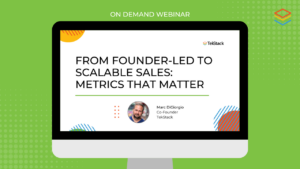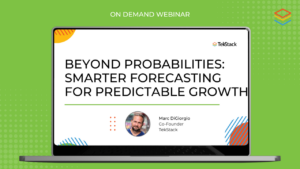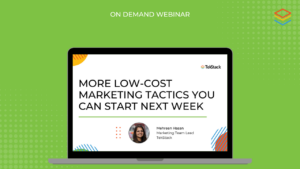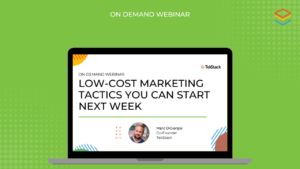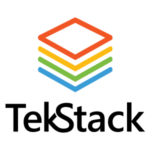
The website is usually seen as something that falls under marketing’s domain as a platform for branding, messaging, and content dissemination. What shouldn’t be overlooked is that it’s a powerful asset for the sales team as well. High-intent website visitors, those who land on your site ready to take action, represent a golden opportunity for sales conversions. In this article we discuss some tips on engaging known website visitors who view high intent pages.
What are examples of high intent pages?
Your website will have dozens of pages. But a few pages could be considered ‘high intent’, meaning a visitor who views that page could be signalling that they are ready to go into ‘buy mode’ and engage with a seller. In the B2B technology space, an obvious example of a high intent page could be your Pricing page. A visitor that is looking for pricing information is demonstrating a level of interest that should generate sales engagement.
What is a ‘known’ visitor?
In this context, it’s a visitor who is already a contact in your CRM that visits your site. They convert to a ‘known’ visitor when they click a link from an email you have sent in your marketing automation platform, or when they fill out a posted form on the website.
Tips to converting more site visitors
To act on high intent actions like those visiting a pricing page, we need to get those anonymous visitors to convert into known visitors. There are two ways to go about this:
- Do lots of email marketing. Create an email nurture program that provides high value, high quality, highly segmented content. Those emails you send will have links that go back to your site. When your contacts click those links, you will be able to trace their page views.
- Convert new website visitors with low intent, high value calls to action. Converting visitors on your page is really important. We strongly believe B2B buyers should be able to access ungated content that furthers their buying journey. But you can encourage form fills with high value content as well. While a ‘contact us’ or ‘book a demo’ is a high intent call to action (CTA), the majority of your visitors will not be ready for that level of engagement, and as such, you are only going to convert a low percentage of your visitors.
If you feature a low intent call to action, the site cookie will give you lots of insight – past, present, and future. That low intent conversion form doesn’t need to have 10 mandatory fields. Even a single field, like Email address, is enough to unlock all that history. Great examples of low intent, high value CTAs include things like a whitepaper, case study, recorded product showcase, or newsletter subscription. You will be converting 10X more visitors than a high intent CTA. The more visitors you convert, the more engagement activity you can track.
Create a Campaign Automation for follow-up of known visitors
You can create a “High Intent” Campaign Automation that will basically run a series of actions on autopilot, e.g. when a known visitor comes to your Pricing page. We integrate ClickDimensions marketing automation platform which has some great functionality to track this stuff.
ClickDimensions Campaign Automation
This Campaign Automation (CA) will trigger on a specific page URL being visited. The CA will assign a seller – often contacts are owned by marketing – or a user other than the seller. A marketing email can go out to the contact with a friendly message asking if they need help. If you don’t want to feel like a stalker, you can put a wait timer step in the CA to delay the email by a day. The next step will be an activity to remind the newly assigned seller to add the contact into a sequence. Quite often, sellers give up after one call or email attempt.
Score boost. We recommend using engagement scoring on all contacts and the accounts they are related to. Scoring allows the buyer to engage without having a seller all over them. As they continue to engage with emails, events, or other actions, their score will increase. This boost will jump their score. We like working with thresholds of 100. Any account with a score greater than 100 should be engaged with a seller. This will get those accounts there sooner.
Add a Campaign Response. These are important for a few reasons. In TekStack, campaign responses will appear in an account and contact’s timeline, so it’s easy to see which campaigns a buyer engaged with. It’s cool to be able to answer the question, “How many times did marketing touch this account before they became an opportunity?” Campaign Responses give you that answer.
Finally, the CA will notify the seller that they’ve been assigned a contact, and a bunch of automated stuff has happened. You can also put that at the front of the CA, but in this case, it wouldn’t matter because it all happens at once.
Create a view of Highly Engaged Buyers
Ideally you already have a dashboard that provides some daily insights. Be sure to add a component that shows all recent website visitors who have come to a high intent page. In TekStack, a new Contact View that looks something like this:
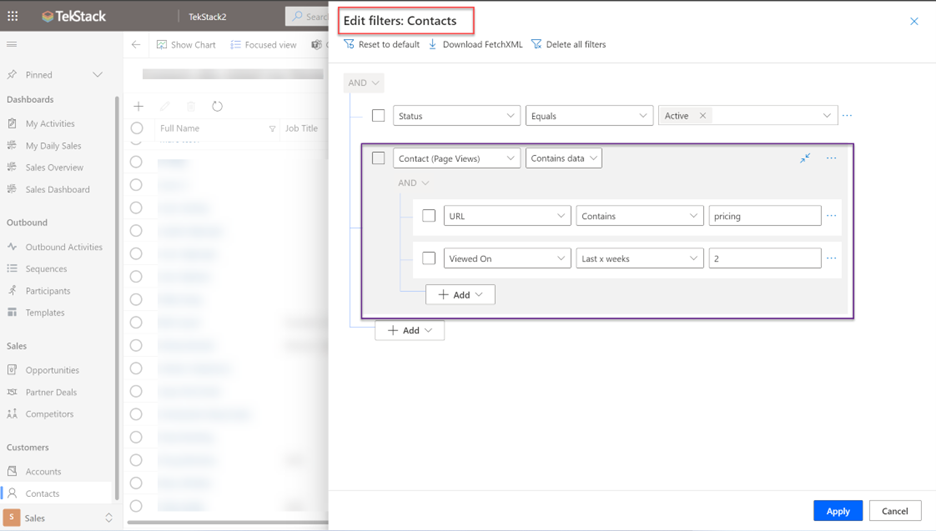
setting up a contact filter based on page views
Add that view to your homepage so that you can get some visibility on known visitors that are showing intent.

Dashboard showing high intent visitors
Giving sellers visibility on buyer’s journeys
So, what’s the point of doing all of this? Buyers generally want to engage less with sellers and want to some autonomy during their buying journey. However, in the complex world of B2B technology, sometimes buyers don’t have access to all the information they need to make their journey frictionless.
Using these automated signals does a few things:
- Ensures that the buyers that are showing high intent are being followed up with appropriately.
- Ensures that your sellers see which of the accounts and contacts are showing intent.
There is a fine balance between a heavily gated website that generates low intent MQL and an ungated website that only captures high intent CTAs like demo requests. By automating the middle, you are giving your potential buyers the flexibility they want, but ensuring that your follow-up and seller engagement is well timed.
TekStack gives you all the tools in one platform
Marketing Automation, Outbound Sequencing, Partner Management all in the same platform as CRM. The result is that your sales and marketing team can engage with all buyers, not just new customers.
To learn more, get in touch with us today.




